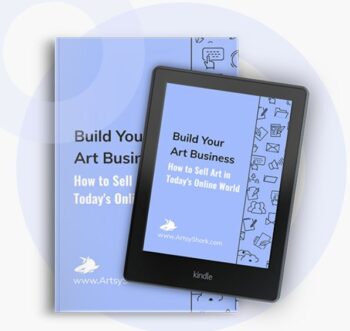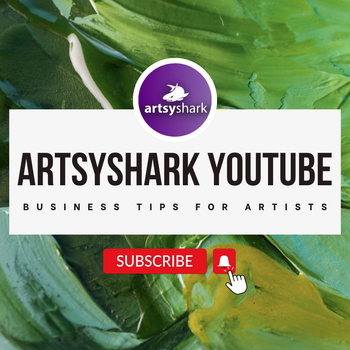by Carolyn Edlund
There are more options than ever for artists and makers to create income. How will you earn?

Artists sometimes worry that with a slow economy or lots of competition, their sales potential is limited. But the internet reaches a global marketplace, and that exponentially expands your earning opportunities. Not only do artists have a broader audience for new sales channels, but traditional methods still exist. Entrepreneurial artists actually have more options than ever.
How many ways can you sell your art? Here are a few that you might consider:
- Retail shows and fairs
- Sell retail from your website or from a third-party site
- Through art galleries on consignment terms
- At trunk shows, pop-up galleries or other temporary venues
- Retail from your own studio
- Solicit and accept commission work
- By personal referral from your existing customers
- Sell wholesale at trade shows, online or through reps
- License your art at trade shows, through licensing agents or direct
- Seek commissions by researching public art opportunities and submitting proposals
- Work with commercial clients through corporate art consultants
- Sell directly to the trade (designers, architects, specifiers, building managers)
- Create and offer digital products or services
Artists can combine sales methods, thereby creating different income streams that complement each other. This can help smooth over hills and valleys in revenue that often occur with only one method of earning. Multiple forms of income are mainstream today, produced by typical income streams as well as side gigs.
Combining income streams allows you to drive multiple forms of revenue without a lot of additional time commitment. For example, licensing your art involves upfront time and labor, but can result in regular quarterly income for years after your part of the work is completed.
An income stream may take active, passive, or both forms. As a case in point, teaching is an income source for many artists. It can be an active in-person job, or a more passive stream derived by selling video lessons to customers. In this way, the artist can control their level of personal involvement and also leverage their work product by producing it once, then selling it over and over again.
Another type of passive income is using print-on-demand sites to sell, and can be a quick and easy additional stream. Upload images of your artwork, and select product categories. Although there is marketing involved, the result of sales is automated. When orders come in, the provider does the work of accepting payment, production, shipping and customer service. This side stream can add to your monthly income from other sources without a lot of time and effort on your part.
Income streams may be a main source of revenue, but also create mostly seasonal sales. If you sell primarily through fairs and festivals, the off season can be financially difficult unless you follow snowbirds south or have other plans in place. Here’s where complementary streams can help avoid feast and famine periods. Wholesaling is often used as a complementary form of income that works with seasonal retail, since it often results in sales during slow periods.
If you’re looking to create a business model that maximizes opportunities and sales volume, you may want to include plans for multiple ways to earn without a lot of extra effort. This not only brings in additional revenue, but also diversifies your business income, resulting in more stability overall.
Ultimately, the number and type of income streams varies by individual artist, based on personal preferences and the suitability of their work for different markets.



Speak Your Mind